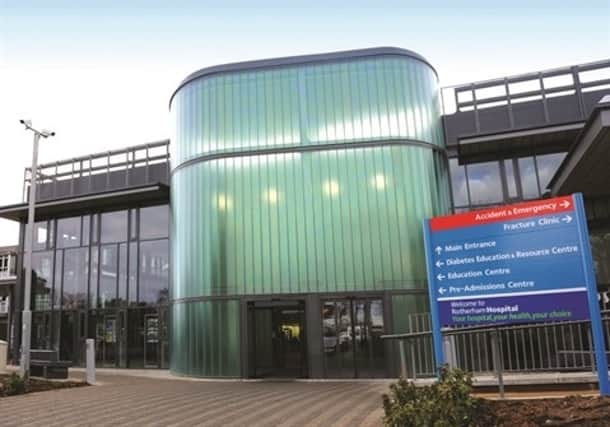12 hour waits in A&E


ROTHERHAM Hospital has reported record-breaking ambulance handover delay times as well as numbers of patients waiting longer than 12 hours in A&E, with a health boss saying demand on “overwhelmed” staff was the highest they have seen in these “unprecedented times”.
The number of ambulance handovers lasting longer than an hour, also known as “black breaches”, hit 307 last November — well above the 190 of the previous month and nearly five times the 62 in November 2020.
In a further sign of pressures on the hospital, 782 patients — the equivalent of one in ten — waited 12 hours from the time of their arrival in A&E to be seen in November — up from 631 patients in October.
The 10.06 per cent of A&E patients was over a quarter higher than the previous month’s 7.89 per cent and eight times the figure for the November 2020, when it stood at 1.3 per cent.
Hospital chief executive Dr Richard Jenkins said the “the long waits in UECC (the Urgent and Emergency Care Centre) are some of the longest nationally.”
Rotherham NHS Foundation Trust’s (TRFT) integrated performance report also found a rise in the average time patients waited in the emergency department before being seen for an initial assessment to 28 minutes — nearly double the figure for the same month the previous year of 16 minutes and a rise of three minutes on the previous month’s 25.
In his chief executive’s report, Dr Jenkins, said growth in the overall waiting list had “stabilised”, but the number of people waiting 18 or more weeks was rising.
Five specialties, including gynaecology, trauma and orthopaedics, and general surgery made up two-thirds of the figures.
The waiting list size for November 2021 was 20,489, up slightly from the previous month of 20,478. The target is 19,705.
Dr Jenkins said increased referral volumes since last March, ongoing infection prevention and control requirements, and increased staff absence were all contributing to waiting list growth.
The trust was also continuing to “see and treat a consistent number of attendances” in its urgent and emergency care centre (UECC), he said.
“The ambulance service and other local trusts have experienced significant pressures over the last few months.
“The effects of increased long length of stay and complexity of patients has caused difficulties and long waits within our emergency pathways.”
In his reset and recovery operational report, chief operating officer George Briggs said staff at the UECC were becoming “overwhelmed” as a result of increasing admissions including “lots of walk-in and minor patients attending in the afternoon”.
He added: “This has manifested in very high numbers of patients in the UECC, on numerous occasions over 100 in the evening. These numbers of patients are overwhelming the UECC staff, and causing concern and an inability to manage patients in a timely way.
“This is a national issue and not specific to TRFT although the long waits in UECC are some of the longest nationally.”
Speaking after the reports were published, Mr Briggs said: “As an organisation, our trust has been under considerable pressure with more patients requiring inpatient emergency care than we have seen previously.
“This has been compounded by a peak in demand for Covid care, due to the Omicron variant. We now have the highest numbers of Covid patients in hospital beds in over a year.
“Coinciding with this peak in demand, the number of staff off sick or unavailable for work hit a local high. This necessitated closing our elective capacity and reassigning colleagues from non-emergency work to support emergency pathways.
“Compounding this, we have seen a month on month increase in patients staying for three weeks or more, peaking at over 90 in the last week. This high demand has resulted in processes being slowed or delayed. The demand on the staff across the trust has been the highest I have ever seen, and I can only thank them for their hard work and dedication.
“This phenomenal workload, the demands on the frontline staff, and the reduced ability to create beds at times of need has resulted in longer waits for emergency and elective care.
“We will do our best to ensure that patients are informed of any long waits. “We would like to thank the community for their understanding and patience throughout these unprecedented times.”